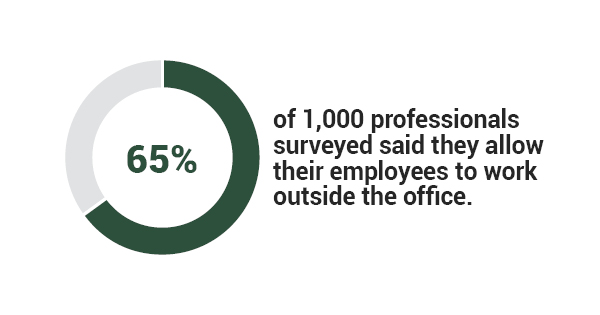We rely on technology to go about our daily lives. From work obligations to family time, our gadgets play an important role. They can also provide us with a way to do our jobs even when we aren’t in a physical office. That’s why so many businesses have embraced different office solutions like working remotely and telecommuting. In fact, 65% of 1,000 professionals surveyed said they allow their employees to work outside the office. But while telecommuting and remote working are often thought to be synonymous, they’re actually slightly different concepts. Understanding the difference between these unique setups can help you discern which will be most appropriate for your situation.
Working Remotely
If you work remotely, you can essentially work from anywhere. While this is technically true of telecommuting as well, remote workers often don’t live anywhere near where a business is located. That means that you could have employees working for you from virtually any location, whether it be an hour away or clear across the world. Because of this, you may never meet your remote workers in person. Most of the time, they won’t be expected to attend meetings at your office. These positions can be ideal for those who often travel for pleasure, students, parents, and those who want a more flexible schedule but who are comfortable with the idea of having little interaction with their coworkers and managers.
Telecommuting
In many cases, telecommuters do live within a relatively close distance of the business for which they work. This means that it’s sometimes expected for these employees to attend company social gatherings or important meetings. Sometimes, telecommuting does offer a flexible schedule, but sometimes these employees do have to work in the office and follow regular office hours. Sometimes, people who telecommute will explore different office solutions (like coworking spaces or virtual office suites), rather than work at home. While telecommuting is sometimes used interchangeably with remote working, telecommuting is often slightly less flexible or requires a bit more commitment on the employee’s part. However, this can be beneficial in many cases, since it allows the worker to feel more involved in company culture and connected to the work they do.
Why offer remote work or telecommuting options?
For employees, these options offer a better work/life balance (and of course, the chance to work in comfy clothes). You might think that these flexible options benefit only the worker, but that actually isn’t true. Telecommuting and remote work can actually increase productivity and creativity, reduce employee absences and attrition, and decrease overall operating costs. Businesses can also split the difference by exploring different office solutions that allow employees to work in a great environment with minimal distractions.
It may seem radical to some, but there’s a reason why more businesses have embraced this type of working style. Of course, it won’t make sense for every position or in every industry. But if you’re struggling to retain employees, maintain output, or grow as quickly as you’d like, telecommuting or remote work may be something you should consider for your employees.

